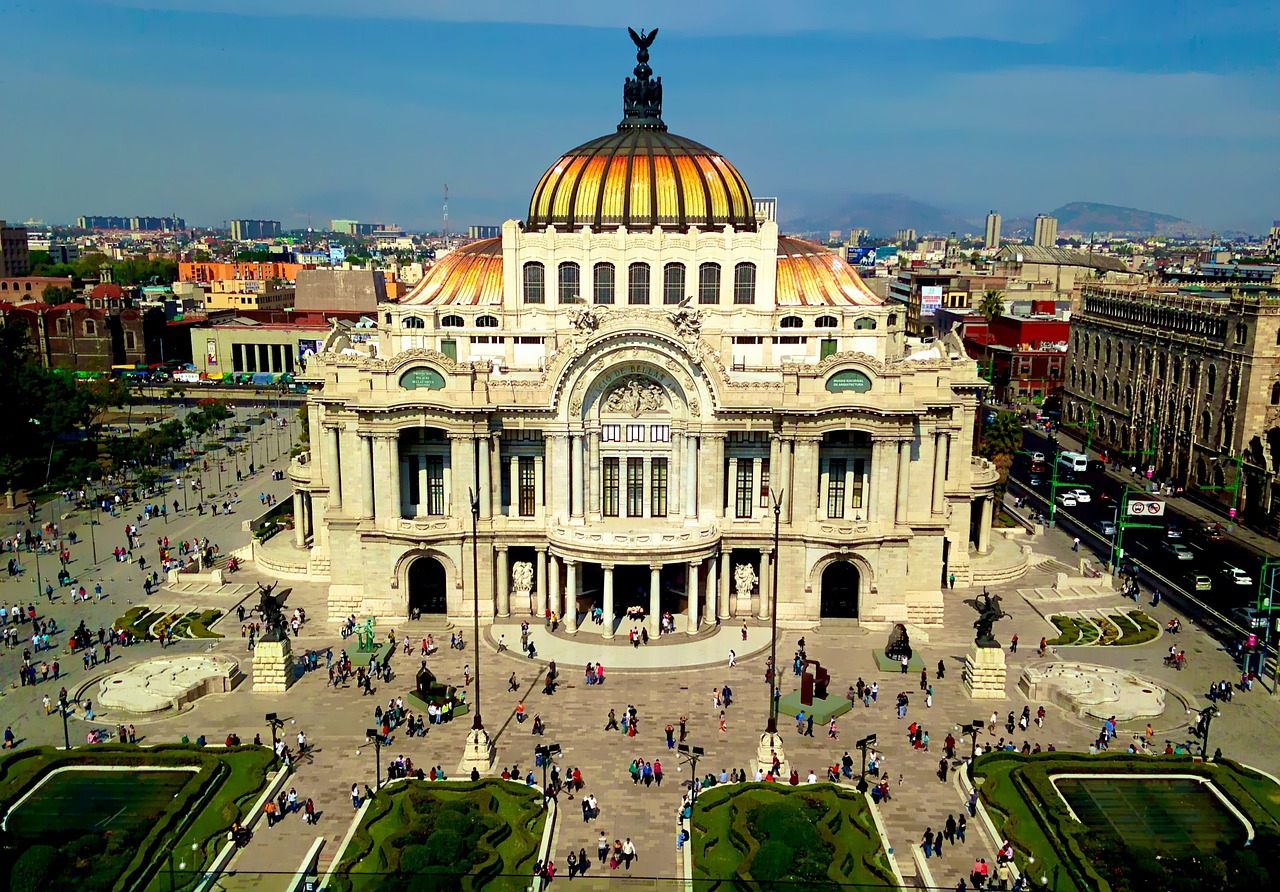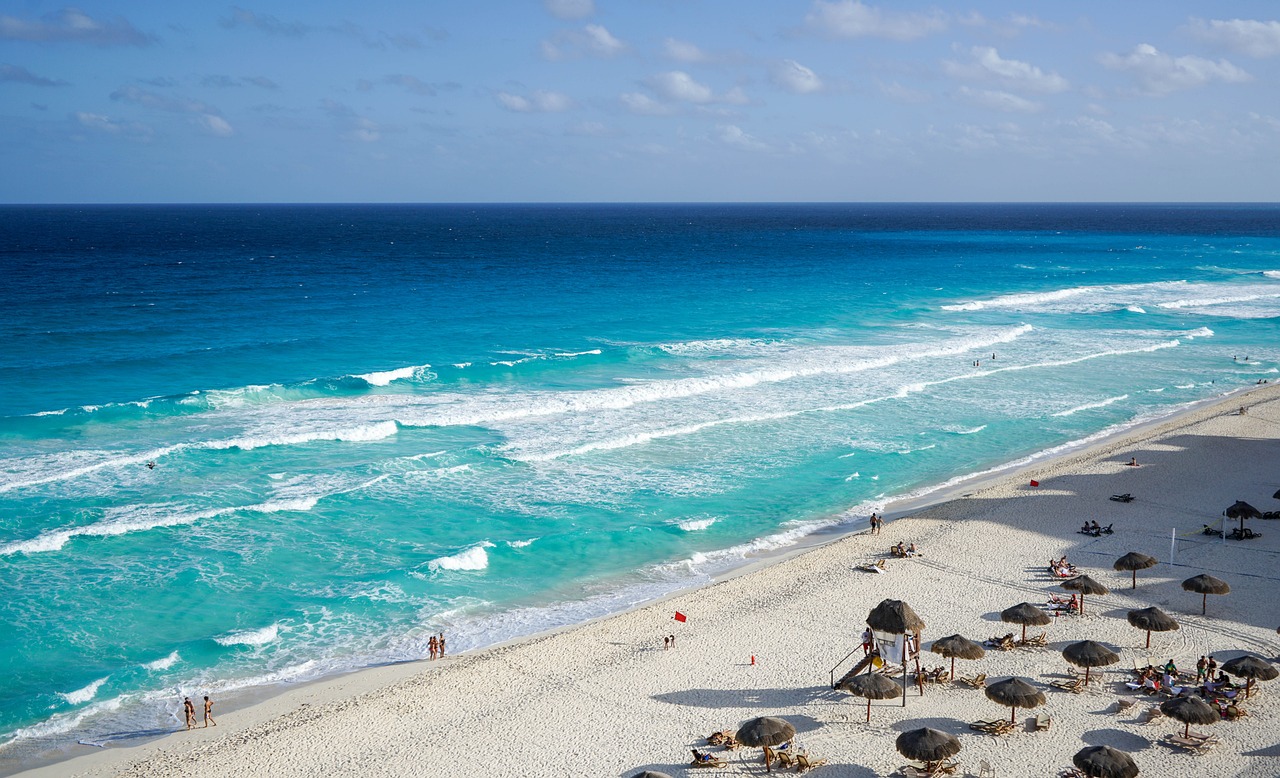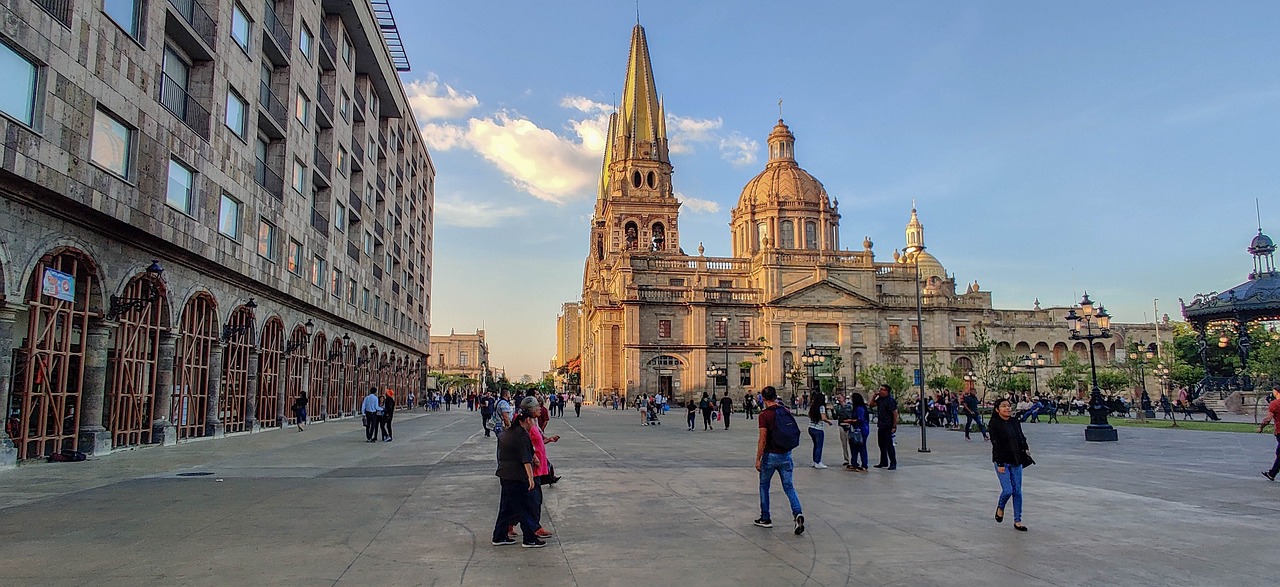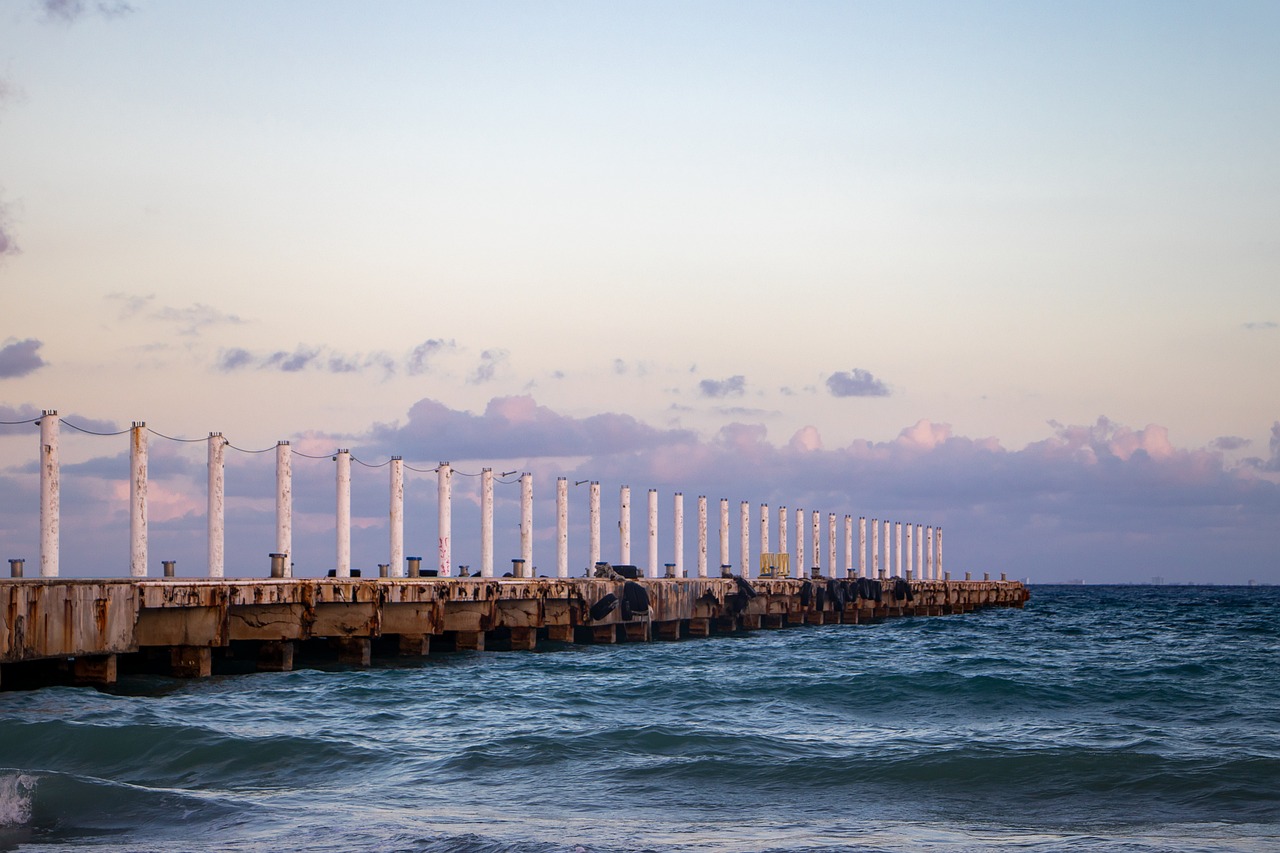Mexico City is the capital and largest city of Mexico, located in the central part of the country. It is situated in the Valley of Mexico, a large basin surrounded by mountains, and has a population of over 8 million people. Mexico City is the political, cultural, and financial center of Mexico, and is one of the most important cultural and financial centers in the Americas. It is also known for its rich history, art, architecture, and cuisine, as well as its vibrant nightlife and entertainment scene.
Short History
Mexico City has a long and rich history that dates back to the ancient Mesoamerican civilizations. The city was originally founded by the Aztecs in 1325 as Tenochtitlán, and became one of the largest cities in the world by the 15th century. The city was conquered by Spanish conquistador Hernán Cortés in 1521, and became the capital of the Spanish colonial empire in the New World. Mexico City played a key role in the Mexican War of Independence in the early 19th century, and was officially declared the capital of the newly independent Mexico in 1824. Throughout the 20th century, Mexico City experienced rapid growth and modernization, but also faced challenges such as pollution, traffic congestion, and social inequality. Today, Mexico City is a bustling metropolis that continues to thrive as a center of culture, commerce, and innovation.
Architecture
The architecture of Mexico City reflects the city’s rich history and diverse cultural influences. One of the most prominent architectural styles in the city is the colonial style, which can be seen in many of the historic buildings in the city center. The most famous example is the Mexico City Metropolitan Cathedral, which was built in the 16th century and features a mix of Baroque, Renaissance, and neoclassical styles. Another notable example of colonial architecture is the Palace of Fine Arts, which features Art Nouveau and Art Deco elements.
In addition to colonial architecture, Mexico City also boasts a number of modern and contemporary buildings, such as the Torre Mayor skyscraper, which is the tallest building in Latin America. Other notable modern buildings include the Soumaya Museum, which features a striking metallic exterior, and the National Museum of Anthropology, which is a concrete and steel structure with a distinctive water feature.
Finally, Mexico City is also known for its colorful and vibrant architecture, particularly in neighborhoods such as Coyoacán and Xochimilco. These areas feature traditional Mexican architecture with bright colors, intricate patterns, and ornate details.
Museums and Galleries
Mexico City is home to a wide variety of museums and galleries, ranging from ancient artifacts to modern art. Some of the most interesting ones include:
- National Museum of Anthropology – This museum is considered one of the best in the world for pre-Columbian art and artifacts. It houses a vast collection of Mayan, Aztec, and other indigenous artifacts, including the famous Aztec Calendar Stone.
- Frida Kahlo Museum – Also known as the Blue House, this museum is dedicated to the life and work of Mexican artist Frida Kahlo. It features a collection of her paintings, personal items, and photographs.
- Palacio de Bellas Artes – This stunning building is both an art museum and a performing arts center. It features murals by famous Mexican artists such as Diego Rivera and David Alfaro Siqueiros.
- Soumaya Museum – This modern museum is home to the personal art collection of Mexican billionaire Carlos Slim. It features works by famous artists such as Salvador Dali, Pablo Picasso, and Vincent van Gogh.
- Museo del Templo Mayor – This museum is located on the site of the Aztec Templo Mayor, which was one of the most important temples in ancient Mexico. It houses artifacts from the temple and other Aztec sites.
- National Museum of Art – This museum is dedicated to Mexican art from the colonial period to the present day. It features works by famous artists such as Diego Rivera, Frida Kahlo, and Rufino Tamayo.
These are just a few examples of the many museums and galleries that can be found in Mexico City. The city’s rich history and cultural heritage make it a fascinating destination for art and history enthusiasts.
Landmarks and Monuments
Mexico City is home to numerous interesting landmarks and monuments that showcase the city’s rich history and culture. Here are some of the most notable ones:
- The Zocalo – Also known as the Plaza de la Constitucion, this is the main square of Mexico City and one of the largest public squares in the world. It is surrounded by several historic buildings, including the National Palace and the Metropolitan Cathedral.
- Chapultepec Castle – This beautiful castle is located on top of a hill in Chapultepec Park and offers stunning views of the city. It was built in the 18th century and served as the residence of several Mexican presidents.
- Teotihuacan – Located about 30 miles outside of Mexico City, Teotihuacan is a complex of ancient ruins that dates back to pre-Columbian times. It features several impressive pyramids, including the Pyramid of the Sun and the Pyramid of the Moon.
- Angel of Independence – This iconic monument is located on Paseo de la Reforma, one of the main avenues in Mexico City. It was built to commemorate Mexico’s independence from Spain in the 19th century.
- Palacio de Bellas Artes – This stunning building serves as both an art museum and a performing arts center. It features a beautiful Art Nouveau facade and stunning murals by famous Mexican artists such as Diego Rivera and David Alfaro Siqueiros.
- Templo Mayor – This ancient Aztec temple is located in the heart of Mexico City and was once the main temple of the Aztec capital of Tenochtitlan. It was rediscovered in the 20th century and is now a popular tourist attraction.
These landmarks and monuments are just a few examples of the many fascinating sights to see in Mexico City. The city’s rich history and cultural heritage make it a must-visit destination for anyone interested in history, architecture, and art.
Parks and Green Spaces
Mexico City is home to several beautiful parks and green spaces that provide a welcome respite from the bustling city. Here are some of the most popular ones:
- Chapultepec Park – This is one of the largest urban parks in the world, covering over 1,600 acres. It features several museums, a zoo, a lake, and several gardens and walking trails.
- Alameda Central – Located in the heart of Mexico City, this historic park features beautiful fountains, statues, and gardens. It is surrounded by several important buildings, including the Palace of Fine Arts and the National Museum of Art.
- Bosque de Tlalpan – This large forested area is located on the southern edge of the city and features several hiking trails, picnic areas, and a small lake.
- Parque Mexico – This charming park is located in the trendy Condesa neighborhood and features beautiful gardens, a lake, and several cafes and restaurants.
- Xochimilco – This unique park features a system of canals and floating gardens that date back to pre-Columbian times. Visitors can take a boat ride along the canals and enjoy traditional food and drinks.
These parks and green spaces provide a welcome escape from the hustle and bustle of Mexico City and offer visitors a chance to enjoy nature and relax in a peaceful setting.
Shopping Districts
Mexico City is a vibrant and diverse city with several great shopping districts to explore. Here are some of the most popular ones:
- Polanco – This upscale neighborhood is home to some of the city’s most exclusive shops, boutiques, and restaurants. It’s a great place to shop for designer fashion, jewelry, and high-end goods.
- Centro Histórico – This historic district is home to several traditional markets and street vendors selling everything from handcrafted souvenirs to food and drinks. The Mercado de la Ciudadela is a popular market for buying traditional Mexican crafts and souvenirs.
- Condesa and Roma – These trendy neighborhoods are home to several boutiques and independent shops selling unique clothing, jewelry, and accessories. It’s a great place to find one-of-a-kind items and support local businesses.
- Santa Fe – This modern neighborhood is home to several large shopping malls, including the Centro Santa Fe and the Samara Shops. It’s a great place to shop for international brands and high-end goods.
- Coyoacán – This historic neighborhood is home to several traditional markets and street vendors selling traditional Mexican crafts and souvenirs. The Mercado de Coyoacán is a popular market for buying souvenirs and trying traditional Mexican street food.
Whether you’re looking for high-end fashion, unique souvenirs, or traditional Mexican crafts, Mexico City has something to offer for every shopper.
Food and Drink
Mexico City is a food lover’s paradise, with a wide variety of delicious dishes and drinks to try. Here are some of the most popular ones:
- Tacos al Pastor – These are Mexico City’s most famous tacos, made with marinated pork, pineapple, and a variety of toppings. You can find them at street vendors and taquerias all over the city.
- Chiles en Nogada – This traditional dish is made with poblano peppers stuffed with meat and fruit, covered in a walnut cream sauce, and topped with pomegranate seeds. It’s a special dish often served during the Mexican Independence Day celebrations.
- Tamales – These steamed cornmeal cakes are filled with a variety of ingredients, including meat, cheese, and vegetables. They’re a traditional Mexican breakfast food and can be found at street vendors and markets throughout the city.
- Mezcal – This smoky, agave-based spirit is a traditional Mexican drink that’s similar to tequila but with a more complex flavor. It’s often sipped straight or mixed into cocktails.
- Horchata – This refreshing drink is made from rice milk, cinnamon, and sugar. It’s a popular beverage to accompany spicy foods and can be found at street vendors and restaurants throughout the city.
These are just a few examples of the many delicious dishes and drinks you can try in Mexico City. With its vibrant food scene and diverse culinary traditions, there’s something for every taste and preference.
Transportation
Mexico City is a bustling metropolis, but it has several transportation options to help you get around the city. Here are some of the best ways to move around Mexico City:
- Metro – The Mexico City Metro is one of the largest subway systems in the world, with 12 lines and over 160 stations. It’s fast, cheap, and easy to use, making it a popular choice for locals and tourists alike.
- Metrobus – The Metrobus is a bus rapid transit system that runs on dedicated lanes throughout the city. It’s a fast and efficient way to get around, with several lines that connect to different parts of the city.
- Taxi – Taxis are widely available throughout Mexico City, and they’re a convenient way to get around if you’re traveling in a group or carrying heavy luggage. However, it’s important to use official taxis and negotiate the fare before getting in to avoid scams.
- Bike – Mexico City has a public bike-sharing system called Ecobici, which allows you to rent a bike from one of the many stations located throughout the city. It’s a great way to explore the city’s parks and bike paths.
- Walking – Many of Mexico City’s attractions are within walking distance of each other, especially in the historic center. Walking is a great way to soak up the city’s atmosphere and discover hidden gems along the way.
These are just a few of the best ways to move around Mexico City. With a little planning and some basic Spanish phrases, you can explore this vibrant city with ease.
City Safety
Mexico City has a reputation for being a relatively unsafe city, and there are certain areas that are known to be more dangerous than others. However, like many large cities around the world, Mexico City is generally safe if you take basic precautions and use common sense.
To stay safe in Mexico City, it’s important to:
- Stay in well-lit and busy areas, particularly at night.
- Avoid displaying wealth, such as expensive jewelry or electronics.
- Use only licensed taxis or ride-hailing services like Uber.
- Keep an eye on your belongings and be aware of your surroundings at all times.
- Use caution when withdrawing cash from ATMs or exchanging money.
Mexico City has made significant improvements in recent years to improve public safety, and there are plenty of things you can do to ensure a safe and enjoyable visit to this vibrant city. It’s always a good idea to research the areas you plan to visit and ask locals for advice on staying safe.
Expensive or Cheap
Mexico City is a large and diverse city, and the cost of living can vary widely depending on your lifestyle and where you choose to live. Generally speaking, Mexico City is an affordable destination, especially compared to other major global cities. However, there are still plenty of opportunities to spend money, particularly if you enjoy fine dining, luxury shopping, or upscale entertainment.
Some of the factors that can affect the cost of living in Mexico City include:
- Housing: The cost of rent or mortgage payments can vary significantly depending on the neighborhood and the size and quality of the property.
- Transportation: Mexico City has an extensive public transportation system, but it can be crowded and slow. Taxis and ride-hailing services like Uber are also available.
- Food and drink: Mexico City is famous for its cuisine, and there are plenty of affordable options for street food and casual dining. However, upscale restaurants can be quite expensive.
- Entertainment: Mexico City has a thriving arts and culture scene, with many museums, galleries, and theaters. Prices can vary widely depending on the venue and the type of event.
Overall, Mexico City can be a very affordable destination if you are willing to stick to a budget and be mindful of your expenses.
Best Time to Travel
The best time to travel to Mexico City is generally considered to be from March to May and from September to November. During these months, the temperatures are mild and comfortable, and there is less rainfall. The peak tourist season is from December to February when the weather is dry and cool. However, this is also the busiest time of the year, and prices tend to be higher. The rainy season in Mexico City is from June to August, and the weather can be humid and hot. It’s best to avoid traveling during this time if you don’t enjoy heavy rainfall and high humidity.
Date Ideas
There are many romantic and unique date ideas to explore in Mexico City, here are some suggestions:
- Visit the Chapultepec Castle: Take a stroll around the beautiful Chapultepec Park and then visit the stunning castle, which is now a museum filled with art, artifacts, and history.
- Take a hot air balloon ride: Experience Mexico City from a different perspective and take a hot air balloon ride with your partner. This is an unforgettable experience that will provide breathtaking views of the city.
- Explore the Xochimilco canals: Take a traditional trajinera boat ride through the colorful and lively canals of Xochimilco. You can enjoy food, drinks, and live music along the way.
- Watch the sunset from the top of the Torre Latinoamericana: Enjoy stunning panoramic views of the city from the top of this iconic skyscraper, while sipping on cocktails and watching the sunset.
- Take a cooking class together: Mexican cuisine is known for its bold flavors and unique spices. Why not take a cooking class together and learn how to make traditional Mexican dishes with your partner?
- Stroll through the Roma neighborhood: Take a leisurely stroll through the charming and trendy Roma neighborhood. Stop by the many cafes, restaurants, and boutiques along the way.
- Visit the Frida Kahlo Museum: Learn about the fascinating life and art of Frida Kahlo at her former home, which has been turned into a museum. This is a great way to immerse yourselves in Mexican culture and history.
Fun and Interesting Facts
Here are some fun and interesting facts about Mexico City:
- Mexico City is built on the ruins of Tenochtitlan, the capital of the Aztec Empire, and many ancient structures can still be seen in the city today.
- Mexico City is sinking at a rate of about 10 centimeters per year, due to its location on soft, unstable soil.
- The city is home to the largest university in Latin America, the National Autonomous University of Mexico, which has a student population of over 300,000.
- Mexico City has one of the largest metro systems in the world, with 12 lines and over 195 stations.
- The city is famous for its street food, including tacos, quesadillas, and elote (corn on the cob), which can be found at numerous food stands and markets throughout the city.
- Mexico City is home to several world-class museums, including the National Museum of Anthropology, which houses the largest collection of pre-Columbian art in the world.
- The city is also known for its vibrant street art scene, with murals and graffiti adorning many buildings and public spaces.
- Mexico City is one of the most populous cities in the world, with over 21 million people living in the metropolitan area.
- The city has a rich cultural heritage, with traditions and customs that blend indigenous, Spanish, and African influences.
- Mexico City is a hub for international business, finance, and tourism, and is considered one of the most important cities in Latin America.
In conclusion, Mexico City is a vibrant and diverse city with a rich history, impressive architecture, numerous cultural attractions, and delicious cuisine. It has a complex and fascinating cultural heritage, which is reflected in its museums, galleries, and landmarks. Despite some safety concerns, Mexico City is a bustling and lively metropolis that offers a unique experience to its visitors. Whether you are interested in history, art, or food, Mexico City is a must-see destination that will captivate your senses and leave you with unforgettable memories.



